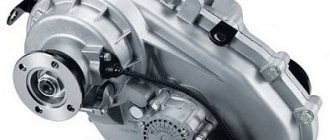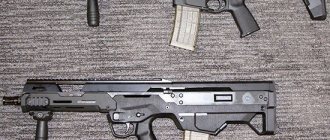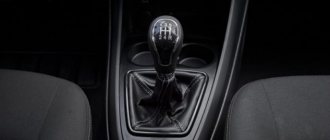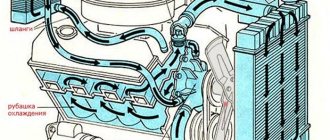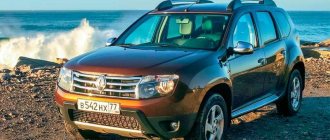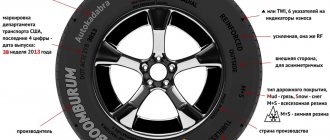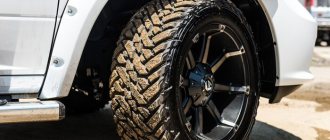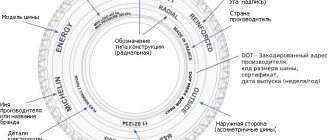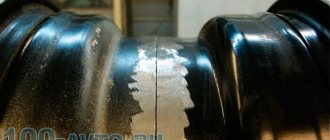Tread depth of winter and summer tires
The safety of driving a car depends on many factors, but one of the main ones is the condition of the tires, the height or depth of the tread.
It is the tires, taking into account the seasonality - summer and winter - that provide excellent grip on the roadway surface. Tires come in a variety of varieties, depending on the vehicle for which they are selected.
If we talk about passenger cars, the main types are as follows:
- summer;
- winter (studded or Velcro);
- by purpose - off-road (for SUV), sports, regional, highway;
- all-season.
The depth of the tire pattern depends on the type and purpose of the wheels. We'll talk about this in the article.
Features and types of winter tires
Tires are divided into options depending on the season and can be summer, winter or all-season.
Each option is designed for specific weather conditions and differs in height and tread pattern for maximum levels of traction. The tread height of a winter tire will depend on the operating characteristics of such rubber. Products are also classified based on the type of vehicle for which they are intended. Winter tires can be studded or with Velcro. In order for tires to last longer, the car should be “changed” with the arrival of spring warmth. Winter tires have a softer coating and a larger number of slots (lamellas). These tires provide excellent contact with the road surface, even if it is covered with snow or ice. But such rubber begins to lose its properties at ambient temperatures above +5 Celsius. On dry asphalt, these tires quickly wear out and become bald. Some models of winter tires are suitable for regions with the harshest winters, and can also be successfully used in difficult conditions, in snowy mountainous areas and on untreated city roads. Additionally, snow chains can be used. There are also high-speed winter tires with a sporty tread pattern.
The tread depth of new winter tires that are designed for winter is an important indicator, since road conditions become more dangerous during this season. All winter tires are divided into the following types:
- Studded. These tires will provide traction on the road surface, breaking up ice and snow. Such tires are also suitable for driving on asphalt, but they are quite noisy and the studs can be damaged when braking.
- Scandinavian type. This type of rubber was developed specifically for driving in conditions of frequent snowfalls and severe frosts. Thanks to the asymmetrical pattern and rectangular cups, the tires act on ice and snow, moving them away from the contact surface when using sipes.
- Frictional. This type of tire is suitable for off-road driving, where there is slush and dirt. Tires can also be used to navigate lightly snowy sections of the route. This type of rubber has thin slots and special lugs that increase the traction area on asphalt wet from precipitation. The pattern of this rubber will be symmetrical.
Summer tire tread height
For a regular passenger car, the tread height of new tires is 7.5-8.5 mm . Provided that you purchase tires for driving on public asphalt roads.
If the car owner is the owner of an SUV or crossover and often goes off-road, the tread depth should be around 17 mm, due to the protruding cups and lugs.
Just in case, let us remind you that from January 1, 2015, new clauses were introduced into the rules for admitting vehicles to operation, according to which the residual tread depth cannot be less than 1.6 mm for passenger cars. This applies to both summer and winter tires. Although, it is advisable to install new tires when the tread has worn down to 2 mm. There is a special icon on the court - TWI, which determines the degree of wear.
You need to understand that there are no specific standards for the tread height of new tires. If you stop by a serious store, you should first of all pay attention to the manufacturer: Nokian, Michelin, Goodyear, Bridgestone and many others. These companies are famous for their high quality, so if you buy their products, you will be completely satisfied.
The tread height will be within 8 mm. It is allowed to reduce it in cases where we are talking about tires for high-speed driving in sports mode. The depth then can be approximately 5-6 millimeters.
Methods for measuring the tread height of winter tires
Modern manufacturers make it much easier to monitor tire tread wear. For this purpose, a special indicator is provided on the tire, which can be presented in the form of a colored layer, a pictogram or an indication of the number of mm. As this designation wears off, the driver can understand whether the tires need to be replaced with new ones.
If the tires do not have a wear indicator, you can use improvised means (a coin) or special devices:
- electronic depth gauge;
- ruler;
- caliper with depth gauge.
These devices are simply lowered between the blocks and show the current winter tire tread height. If you don't have them on hand, you can use a coin. It sinks edge deep. The place where the protector ends is clamped with your finger. All that remains is to measure the resulting height with a ruler. This method is not very accurate and is used as a last resort.
In order for tread depth monitoring to be accurate and informative, measurements must be taken across the entire width and at different points of the radius. The final value is taken to be the minimum height identified during the test. If you notice uneven wear on the tread pattern, it is worth checking the wheel angle for camber and toe.
Winter tire tread height
For winter tires, tread depth is critical. If in the summer you can safely drive on dry asphalt with almost “bald” tires, then in the winter your safety depends on the quality of the tires, especially when driving at high speeds.
Winter “footwear” for passenger cars can be divided into three types:
- studded;
- Scandinavian type;
- frictional
The Scandinavian type and spikes are specially designed for frosty and snowy winters. The tread depth of new winter tires is 9-10 millimeters . The Scandinavian type of tires is characterized by an asymmetrical sparse pattern. Rectangular cups push snow and ice, which are discharged through small slots - lamellas.
Studs, in principle, do the same job - break up snow and ice, providing traction.
Such tires are, of course, suitable for driving on asphalt, but they will make a lot of noise. In addition, you risk losing all the studs when braking sharply on bare asphalt.
The friction type of winter tires is ideal for driving in warm winters with little snow, in slush and mud. The tread depth here is usually about 9-11 mm. Thanks to thin slots and lugs, the grip surface on wet asphalt increases, and all moisture is removed through the sipes. As a rule, friction rubber has a symmetrical tread pattern.
Good winter tires usually last 4 seasons. That is, the tread wears off much more slowly than in summer.
Comparison of Yokohama and Bridgestone tires
To test winter tires, experts used IceGuard iG60 and Blizzak Ice with an asymmetric tread pattern. The Turanza T001 and Bluearth RV-02 took part in the summer tests.
Winter tires
A comparison of Yokohama and Bridgestone non-studded winter tires was carried out in different conditions: on wet, snowy and icy roads.
Handling test results:
- On ice. IceGuard tires outperformed their opponent - 8 versus 7 on a 10-point scale.
- On a snowy road. IceGuard tires scored 9 points, and Blizzak Ice - only 7.
- On wet asphalt. Both opponents were equally stable - a solid 7.
Bridgestone tires
To figure out which winter tires have better traction—Yokohama or Bridgestone—experts tested the tires in acceleration and braking:
- On ice. The results were the same - 6 points out of 10.
- On a snowy road. IceGuard scored 9, and Blizzak Ice scored 8 points.
- In the snowdrifts. Bridgestone skidded and received a rating of 5. In Russian Winter mode, these tires are practically useless. And Yokohama deserved 10 points.
- On wet asphalt. Bridge tires performed well during acceleration and braking: car owners gave it 10 points. The opponent received only 6.
- On a dry track. The gap has leveled out: IceGuard and Blizzak Ice have 9 each.
After comparing Bridgestone and Yokohama winter tires, experts gave advice: if your winters are snowy, choose the second option. And for the southern regions “Bridge” is more suitable.
Summer tires
When longitudinal hydroplaning occurs, one of the car's wheels comes off the road, causing the car to skid. Transverse is even more dangerous - two wheels lose traction.
Results of tests on a wet highway:
- Longitudinal hydroplaning. With Turanza tires, the car skids at a speed of 77 km/h, with competitor tires - at 73.9 km/h.
- Transverse hydroplaning. Result: Turanza - 3.45 km/h, Bluearth - 2.85 km/h.
- Side skid. The stability of the Bridge was 7.67 m/s2 versus 7.55 m/s2 for its competitor.
Yokohama tires
To find out which tires are better, Bridgestone or Yokohama, experts conducted braking speed tests. The cars accelerated to 100 km/h and stopped abruptly. On dry asphalt, the Bridge braked after 35.5 m, and the competitor - after 37.78 m. The remaining speed of the Bluearth was higher - 26.98 km/h versus 11.5 km/h.
The Turanza's handling also turned out to be the best - 9 points on dry and wet roads. Bluearth has only 6.
Tread depth by size
It is also worth noting that the tread height largely depends on the standard size. So, for summer tires the depth will be:
- 165/70 R13 - 7-7.5 mm;
- 175/70 R13 - 7-9 mm.
If we talk about universal or winter tires, the picture is as follows:
- 175/70 R13 - 9-11 mm;
- 187/70 R14 - up to 12 mm;
- 195-205 by 14 - 11-15 mm.
In Russia, in particular, there is a specially approved methodology that provides recommended parameters. Domestic manufacturers adhere to them so that their products comply with GOST.
Tread pattern
The Bridgestone Blizzak VRX tire features an asymmetrical directional tread pattern. That is, the wheels can be installed strictly according to the indicators: Inside (inner side) and Outside (outer side). The inner tread area in the center is equipped with arrow-shaped blocks for effective acceleration and braking. Next comes a series of shoulder rectangular blocks. These functional zones are separated from each other by a wide radial hydraulic evacuation channel.
The outer side is equipped with large, deep diagonal grooves, into which water enters from the outer radial channel, after which it is removed from the tread under the influence of centrifugal force. These elements are also responsible for cross-country ability. Increased siping of the entire running part, like many friction tires, is intended for a better contact patch on: snow, ice and slush. Tread depth is 8.1 - 9.2 mm, depending on the size of the Velcro.
Truck and off-road tires
Truck tires are not divided into summer and winter. They initially come with a powerful deep tread designed for a specific type of coating.
For example, the depth of our popular designs - diamonds, houndstooth - also depends on the standard size:
- 240/260-508 (ZIL, GAZ-3307) - 16.3-18.3 mm;
- 280/300/320-508 (LAZ, MAZ, KamAZ, ZIL) - up to 23 mm.
Well, for special rubber, for example for mining dump trucks, there are special requirements and the depth can significantly exceed the specified values.
For crossovers and SUVs with a standard size of 205-255 and a radius of 15-18 inches, all-terrain, the tread depth ranges from 12 to 17 millimeters. In principle, there is no special need to measure this parameter - height, when purchasing at a dealer store - since the quality and condition are visible to the naked eye.
Tire rating
It is very difficult for the manufacturer Bridgestone to single out tire models that can be considered the best, because almost all of them are made of the same high quality and professionalism. However, specialist experts studied the models in more detail, and based on their results, a special rating list of Bridgestone tire models was compiled.
Experts selected the 6 most popular, widespread and best-selling tire models, which, according to people, are the most optimal for use on the roads. Overall the sheet looks like this:
- Blizzak Revo-GZ
- Dueler H/P
- Potenza RE050 Run Flat
- Ice Cruiser 7000
- Ecopia EP850
- Turanza T001
This rating list, as you can see, includes both summer and winter tires. You should not pay attention to the fact that these tires may have different properties - experts selected the best qualities in tires exclusively for their season and derived their own efficiency factor.
We evaluate Bridgestone winter tires with and without studs
How do the new Bridgestone Blizzak Ice friction tires compare to the familiar Bridgestone Blizzak Spike-02? I tested it on snow and ice near Salzburg, Austria.
In 2021, the new Bridgestone Blizzak Ice Velcro replaced the popular Bridgestone Blizzak VRX, released at the beginning of 2013. I remember those tires worked great on asphalt, but in winter disciplines they looked rather pale compared to their European competitors. To improve matters, Japanese engineers tinkered with the composition of the proprietary microporous rubber Multi-Cell Compound, which should help the tread remove the water film between the ice crust and the tire - which, in fact, is the main advantage of any Velcro friction tire. And they added secret polymers to increase elasticity and friction - plus increased the proportion of silicon dioxide, which, combined with an active foam rubber with a lot of small bubbles and waterways, should further improve grip.
Bridgestone Blizzak Ice friction tires are designed to operate in a temperature range from -45°C to +7°C (for comparison: on the left - the previous VRX model)
In addition, the Japanese found out that the first VRX tires were too flexible: intermittent braking with ABS caused excessive deformation of the tread blocks. Take a look at the drawing of the new Blizzak Ice tire. By the way, “she was not young”: in fact, the new product appeared on the home market back in 2021 under the name Blizzak VRX 2! It’s always like this: first the Japanese offer everything new and good on their islands, and then share with the rest of the world later.
So, thanks to enlarged tread elements, the rigidity of the new studless tires was increased by a quarter. Moreover, there are more lamellas in the blocks, and fewer transverse grooves, but now there are slots in each direction. In addition, they tried to increase the efficiency of the lamellas by more carefully working out the edges of the blocks, which are trying to fulfill the duties of the missing spikes.
Bridgestone BLIZZAK VRX tires technologies and features
New Multi-Cell Compound
When driving on an icy slope in winter, water on the surface of the ice causes slipping.
Bridgestone BLIZZAK VRX studless tires are made using a Multi-Cell Compound rubber compound, which, thanks to microscopic pores, provides more dense contact with ice. As the tire passes over the surface of the water, these pores act as tiny reservoirs to drain the water and, by absorbing it, provide direct contact with the road.
Detailed photo of Bridgestone BLIZZAK VRX tires
Bridgestone BLIZZAK VRX
improved this technology even further, resulting in the creation of a new Multi-Cell Compound. A special hydrophilic coating of these pores has improved the absorbent properties. Bridgestone's new BLIZZAK VRX tire compound can absorb more water from the ice surface, giving drivers more confident braking performance.
New asymmetrical Bridgestone BLIZZAK VRX tread pattern
The new asymmetric tread pattern of the Bridgestone BLIZZAK VRX winter tire improves snow performance by providing full contact with snow-covered roads.
The arrow-shaped tread blocks provide even traction, while the cross grooves effectively grip snow.
The quality of braking and grip on ice of Bridgestone BLIZZAK VRX tires
In addition to the new Multi-Cell Compound, Bridgestone BLIZZAK VRX includes various technological advancements that provide superior driving performance regardless of winter conditions. Especially the new Multi-Cell Compound has significantly improved handling and braking performance on icy surfaces. In Bridgestone's
, BLIZZAK VRX winter tires allowed drivers to stop on bare ice as much as 10% closer than the previous model.
Maximum performance on snow
Compared to previous Bridgestone BLIZZAK Revo GZ
Compared to
Bridgestone BLIZZAK VRX
, the number of transverse grooves (intersections) was increased, which improved the snow-grabbing properties between the tread blocks in contact with a snow-covered surface, and, at the same time, helped to effectively self-clean during rotation.
In addition, the Bridgestone BLIZZAK VRX
(with grooves of different widths in the center and on the edges of the tire) optimized performance in each area of the tread.
Comparison of tread pattern between Bridgestone BLIZZAK VRX and Bridgestone BLIZZAK Revo GZ
Bridgestone BLIZZAK VRX winter tire life
The longer the tire
, the more its characteristics deteriorate, and the harder the rubber becomes.
As the tread
, the new Multi-Cell Compound creates new micropores, keeping the rubber compound soft and providing effective braking over time. We're proud to say that Bridgestone BLIZZAK VRX tires will last 3-4 seasons.
Available sizes of Bridgestone BLIZZAK VRX tires produced by the manufacturer
Bridgestone BLIZZAK VRX tire size chart
produced by the manufacturer i.e.
available for purchase in stores. If your size is not in this table, then the tires are not available for your car, we recommend that you consider another tire model from Bridgestone
| 82S | ||||
| 14″ | 175/70R14 | 84S | 175/65R14 | 82S |
| 185/70R14 | 88S | 185/65R14 | 86S | |
| 185/60R14 | 82S | |||
| 15″ | 185/65R15 | 88S | 185/60R15 | 84S |
| 185/55R15 | 82S | 195/65R15 | 91S | |
| 195/60R15 | 88S | 195/55R15 | 85S | |
| 195/50R15 | 82S | 205/70R15 | 96S | |
| 205/65R15 | 94S | 205/60R15 | 91S | |
| 16″ | 185/55R16 | 83S | 195/55R16 | 87S |
| 205/65R16 | 95S | 205/60R16 | 92S | |
| 205/55R16 | 91S | 215/65R16 | 98T | |
| 215/60R16 | 95S | 215/55R16 | 93S | |
| 225/60R16 | 98S | 225/55R16 | 95S | |
| 225/50R16 | 92S | |||
| 17″ | 205/50R17 | 89S | 215/60R17 | 96S |
| 215/55R17 | 94S | 215/50R17 | 91S | |
| 215/45R17 | 87S | 225/60R17 | 99S | |
| 225/55R17 | 97S | 225/50R17 | 94S | |
| 225/45R17 | 91S | 235/55R17 | 99S | |
| 235/45R17 | 94S | 245/45R17 | 95S | |
| 245/40R17 | 91S | 255/40R17 | 94S | |
| 18″ | 225/60R18 | 100S | 225/45R18 | 91S |
| 225/40R18 | 88S | 235/50R18 | 97S | |
| 235/40R18 | 91S | 245/50R18 | 100S | |
| 245/45R18 | 96S | 245/40R18 | 93S | |
| 255/45R18 | 99S | 275/35R18 | 95S | |
| 19″ | 245/45R19 | 98S | 255/40R19 | 96S |
Bridgestone BLIZZAK VRX tire
designed for a wide range of passenger cars - from middle and compact classes to premium sedans. The friction novelty features a new asymmetric tread pattern, and the tread itself is made of an updated microporous rubber compound Multicell Compaund.
The latter has many 0.3 mm pores that absorb more water in the contact patch. This ability is especially in demand on ice and wet asphalt, when the water layer significantly reduces the tire’s grip on the road.
Overall, according to a Bridgestone
According to Kazuto Fujita winter tires, the new rubber compound is 30% better than that of its predecessor
Bridgestone BLIZZAK Revo GZ
.
Microporous composition of the Bridgestone BLIZZAK VRX tire
made to a fifty percent block depth, therefore, when the tire tread wears down to the wear indicators, the winter characteristics of the BLIZZAK VRX tire noticeably deteriorate and the tire must be replaced.
The new tread pattern has a larger number of blocks, which on the one hand gives it greater flexibility, thereby ensuring tighter contact with road unevenness, i.e. better grip properties, and on the other hand, snow grip has improved, i.e. traction on snow.
— We officially declare that we are better than our competitors!
Bridgestone representative speaking too boldly?
Blizzak VRX
tires , which took place at the Dmitrovsky training ground at the end of last winter?
Etymology of the name Blizzak
Bridgestone
line of winter tires, the company itself interprets it as a mixture of the English word “blizzard” (“blizzard”) and the German “Zacke” (“tooth”). Previously, only studless models were designated by this name, but now studded tires Blizzak Spike-01 have appeared .
Blizzak VRX tread pattern
reminiscent of early models of Nokian studded tires: an aggressive “herringbone” with wide grooves is designed to increase grip on snow, and if the snow is deep, then sawtooth grooves in the shoulder area should help
I also took a look at the Blizzak VRX studless tires
On Finnish tires, rolling is accompanied by a high-frequency hum, while Japanese tires were either “silent” or emitted a low-frequency hum. Again, which is better?
I don’t have a definite answer, but in terms of smoothness Bridgestone
is clearly inferior to Finnish tires: the Touareg rides softer on winter ridges on
Nokian
.
Bridgestone
representatives have a strong trump card in this regard: “Yes, the frame is rigid, but this minimizes the likelihood of damage to it on a bad road.” I won’t argue here: the results of our crash tests, which we subjected both studded and non-studded tires, showed that Bridgestone tires are indeed the most durable.
Bridgestone Blizzak VRX Tire Quality Assessment
Here's a new asymmetrical tread pattern: its blocks compared to the previous Blizzak Revo GZ
, decreased, the rubber compound became softer. According to the creators, this should provide better grip on uneven roads. The composition of the Multicell Compound rubber compound has also been updated. Its porous structure allows it to “absorb” 30% more moisture than the rubber of the previous series. Special additives in the rubber mixture increase the wettability of the micropores of the tread, which allows for better drying of the contact patch.
Starting with a comparison of Michelin X-Ice 3
and
Bridgestone Blizzak VRX
on a
Nissan Teana
.
Acceleration and braking, both on ice and snow, did not reveal an absolute leader. And stability during acceleration turned out to be close - cars on both tire models required significant steering. But the “rearrangement” with the stabilization system disabled has already tipped the scales towards Bridgestone
—
Teana
didn’t fall into the drifts so deeply and for so long.
On the “snake”, the grip limit also turned out to be a little higher - the car responded better to steering turns at higher speeds, however, with a subsequent more abrupt drift. So I’m not sure that Bridgestone
proved to be safer.
Bridgestone tires as soon as possible
with competitors - unlike the
Bridgestone
, I am not yet completely confident that the test site showed me really the best tires.
But one advantage is obvious to me - a wide range of sizes: Bridgestone Blizzak VRX
are available in 53 sizes (from the Zhiguli 175/70 P13 to the impressive 245/45 P19). It is important that both will be produced in Japan. And it is very important that prices for Japanese winter tires will remain one of the most attractive on the market.
Tread height on tires. What is the significance of this parameter?
When choosing new Bridgestone tires for your car, you need to know that each model has its own tread characteristics.
These indicators depend not only on the season during which the product is used. But also from some other factors:
- From the models for which the rubber is oriented.
- From the regulations of the country where it was released.
- And so on.
But it’s important to know more than just the original tread height. It is necessary to understand at what maximum height the structure loses its basic characteristics and ability to operate smoothly.
Sometimes the cost of similar designs that have already been in use depends on the height of the treads.
Protectors and their characteristics
For summer and winter tires, for example, the tread height of new Scandinavian-type tires will be different. The protectors will differ not only in the size of the relief, but also in the characteristics of the materials used for manufacturing. Summer tires require the use of harder types of rubber. An exception is materials intended for installation on SUVs. But in the case of winter tires, the rubber should be more flexible.
A height of 6-8 mm is optimal for high-speed Bridgestone tires that are used in the summer. The minimum indicator increases to 10 millimeters if we are talking about the winter variety. Due to the smaller area of the tread points, such structures wear out much faster. And because the source material is very soft.
Bridgestone winter tires have more stringent requirements for tread depth. The same applies to the usable area of the transverse pattern. The smaller this area, the deeper the punching will be. Or the braking distance of a vehicle. And the stability on the course will become greater.
As for summer tires, it is important that the Bridgestone tread is at least just there. Its erasure, if it has any effect, only affects the ability to hydroplane.
This all means that summer tires can still be used for products with 50% wear. But in winter such behavior is simply unacceptable.
What does the law say about tread height?
Until 2010, the specifics of using rubber in our country were not particularly regulated by law.
Buyers were allowed to use any tires, regardless of characteristics. But then the government started thinking about increasing transport safety.
Since that time, a rule has been introduced requiring the use of protectors with a maximum height of 1.6 mm. Moreover, the requirements were different for each type of transport.
We care about the correct use of tires
You should use quality tires at all times to avoid getting into unpleasant situations. This rule applies to any time of the year. Korean tires are suitable only for those who prefer the cheapest options. They behave quite adequately on the road. There are other features that are worth thinking about to ensure your own safety.
- The behavior of the car changes noticeably if the tires fail and no longer ensure uninterrupted operation.
- It is better to replace it exactly when the manufacturer recommends it.
- Manufacturers often apply special designs to the protectors. If they are erased, it means that a certain resource has already been used up.
- On most models, a special connection is placed between the tread, at a height of 5 millimeters. It is better not to use rubber that passes through this barrier.
- The permissible tire wear is different for each manufacturer. It depends on many parameters that the tires themselves are endowed with.
Uneven tread wear
Tire wear can be uneven for several reasons.
- It is necessary to pay attention to the suspension if there is different wear on tires that belong to the same axle. It is not recommended to drive tires if the difference in wear is more than 1 millimeter. The risk of uncontrolled skidding increases when such tires are used on the front axle.
- Sometimes the treads wear around the circumference, unevenly. This indicates that the driver prefers an aggressive driving style. Braking and acceleration happen too often. Such wear on the new tire has a negative effect on the suspension elements.
- The rubber must have had too low pressure if wear is noticeable around the edges. This happens when a driver drives on a flat tire.
- You should be more attentive to the pressure on the wheels when the tire wears out more in the center. This means that the product has been inflated for a long time.
- Faults should be looked for in the suspension if there is uneven wear across the width. There is a high probability that there will be a need to adjust the camber and replace parts.
Tires on the same car, even on the same axle, can have different tread heights. It depends not only on how well the car’s suspension works, but also on the driving style of the person who owns it. From time to time it is necessary to check the condition of the wheels. In the future, this will help to avoid unnecessary financial costs associated with repairs. And thanks to such checks, it is easier to take care of the safety of your travels, and this characteristic is important.
Source: kolesospec.ru
Tread height on new tire
Hi all! I am puzzled by the purchase of summer shoes for my B4. New shoes 215 45 17 are not affordable for me - a little expensive. Well, I’m choosing from a used one. The question arises what year of tires can be considered normal - not old and, accordingly, what height of the tread of the new tires so that we can be guided by its wear And how to look at it for a year PS The answer options, the fresher the better and the higher the better, are clear to me as clear as day There are a lot of such options in the store
There's an oval with 4 numbers. The first 2 are a week, the second 2 are a year. IMHO, take no older than 07, no more than 50% wear. In terms of wear - you go to any tire store and see what a new one looks like. You can measure it with a coin. After this, understanding where what wear is not a problem
no older than 5 years, each manufacturer has its own year of manufacture. height (depth) of the new tread is 8 mm.
I don’t know if this will help, I have 195/70 R14 Dunlop Graspic DS3 wheels! I went and measured it now, the tread depth is 10mm!! The new ones aren't even on the car yet! My wife spoiled me for my birthday!
